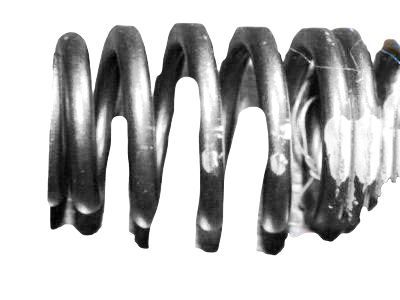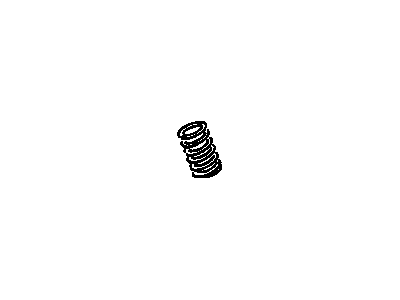My Garage
My Account
Cart
Genuine Chevrolet Beretta Rocker Shaft Spring Kit
Rocker Shaft Spring Set- Select Vehicle by Model
- Select Vehicle by VIN
Select Vehicle by Model
orMake
Model
Year
Select Vehicle by VIN
For the most accurate results, select vehicle by your VIN (Vehicle Identification Number).
6 Rocker Shaft Spring Kits found
Chevrolet Beretta Spring, Valve *Green Inside Diameter
Part Number: 10166343$0.59 MSRP: $0.81You Save: $0.22 (28%)Ships in 1-3 Business DaysChevrolet Beretta Spring, Valve
Part Number: 14076469$9.18 MSRP: $14.43You Save: $5.25 (37%)Ships in 1-3 Business DaysChevrolet Beretta Spring, Valve
Part Number: 22548421$5.94 MSRP: $8.43You Save: $2.49 (30%)Ships in 1-2 Business Days
Chevrolet Beretta Rocker Shaft Spring Kit
Each OEM Chevrolet Beretta Rocker Shaft Spring Kit we offer is competitively priced and comes with the assurance of the manufacturer's warranty for the part. Furthermore, we guarantee the speedy delivery of your orders right to your doorstep. Our hassle-free return policy is also in place for your peace of mind.
Chevrolet Beretta Rocker Shaft Spring Kit Parts Questions & Experts Answers
- Q: Can broken valve springs and defective valve stem seals be replaced without removing the cylinder head in 2.3L four cylinder (Quad-4) engine on Chevrolet Beretta?A: It is possible to replace broken valve springs and defective Valve Stem Oil Seals without removing the cylinder head. In most cases, this operation requires two special tools and a compressed air source. In the absence of compressed air, however, a length of nylon rope can be used to keep the valves from dropping into the cylinder during this procedure. To get started take out the spark plug in that particular cylinder and also ignition coil assembly. Following that, remove cams (if applicable), lifters as well as housings. Then turn the crankshaft until it positions a piston at top dead center on the compression stroke in that affected cylinder. Screw an adaptor into hole for sparkplug and connect an air hose for compressed air supply to it. Feed some compressed air into cylinder to hold valves in place. Or if there is no compressed air take another step by keeping a piston about 45 degrees before TDC on its compression stroke and pass through a long piece of nylon rope via spark plug hole. Now rotate crankshaft in normal rotation direction until it feels slight resistance against it. Put clean rags around holes next to valves so they won't tumble away with pieces or tools down into your engine block. Use valve spring compressor tool to press down on spring and release keepers; remove them first then retainer next spring followed by guide seal rotator The condition of the stem must be checked out for any damage or eccentric movement for checking bind while moving valve up and down vertically within guide Reintroduce air pressure or turn crankshaft round until valve stays closed Repositioning of the valve rotator consequently needs lubrication on stem once more while inserting new guide seal Dust off accumulated debris from guides; finally install new seal then put back retainer, spring together with keepers Detach the hosepipe or pull out rope eventually Replace cam(s), lifters along with housing(s) afterwards start driving your car listening for any unusual sound which may come about and look for oil seeping.
- Q: How to replace broken valve springs and defective valve stem seals without remove the cylinder head in 2.0L/2.2L four cylinder overhead valve engine on Chevrolet Beretta?A: When replacing broken valve springs and defective Valve Stem Oil Seals, the Cylinder Head does not need to be taken out. For this, two special tools and a source of compressed air are needed. If there is no compressed air, then a nylon rope will help to prevent the valves from dropping inside the cylinder. To do this one can remove the Rocker Arm cover and spark plug, rotate the crankshaft to top dead center, connect an air hose to the spark plug hole, take off the rocker arm and Pushrod, provide compressed air for the cylinder and use a valve spring compressor to extract valve spring and seal. It's vital to check for any harm on the valve stem before you install new Valve Stem Oil Seals. Finally reinstalling of valve spring retainer keepers is done followed by putting back the rocker arm pushrod spark plug as well as rocker arm cover.










